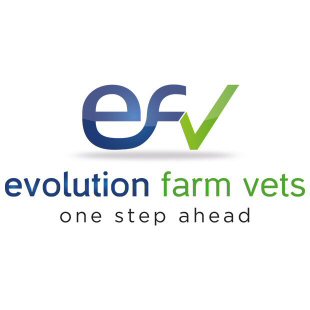Bloat is the excessive accumulation of gas in the rumen and reticulum. It is a sign of an underlying disorder, and is not a diagnosis in itself. It is a relatively common occurrence in cattle and in severe or untreated cases, it can prove fatal. There are two types of bloat - frothy bloat and free gas bloat.
Frothy Bloat
Frothy bloat occurs when the cow ingests legumes, protein rich spring grass or a diet high in concentrates. A stable foam forms within the rumen, the stable foam traps gas produced by normal fermentative processes, and the gas cannot be released by eructation. Frothy bloat is commonly seen when cows are turned out onto young, lush lays and is made worse if animals are hungry when they enter the field as they tend to gorge themselves. These animals bloat rapidly and may be found dead in the field.
Free Gas Bloat
Free gas bloat occurs when there is a physical obstruction (e.g. potato) to eructation and so gas is trapped within the rumen. It may occur simply through a prolonged period of lateral recumbency meaning that fluid in the rumen covers the exit through which gas escapes (the cardia of the rumen). Free gas bloat is easily diagnosed by passage of a stomach tube, which will release the trapped gas if free gas bloat is present. Chronic free gas bloat occurs when there is a long term problem with eructation, such as disruption to the nerve innervating the rumen (vagus nerve).
Clinical Signs
- Distension of the left side of the abdomen, especially in the paralumbar fossa
- A ‘ping’ through the stethoscope when the abdominal wall is flicked while listening to the rumen (free gas bloat)
- Reduced rumenal contractions (strength and frequency)
- Colic or abdominal pain
- Severe cases may show laboured breathing, anorexia, cessation of eructation, colic, staggering, vomiting, collapse or death
Treatment
Free gas bloat, if severe, is an emergency as it can be life threatening, and gas should be removed as quickly as possible. This may be achieved by passage of a gastric tube, but if this fails then trocharisation may be required in the emergency situation. As free gas bloat is a sign of disease, not a diagnosis in itself, exploration in to the cause of the bloat is warranted. If infection is suspected, antibiotics may be indicated. Anti-inflammatory drugs may be indicated if there is indication of underlying inflammatory processes (i.e. fever, pneumonia, etc).
Frothy bloat is also an emergency but is not as easy to resolve, as the stable foam traps gas within the rumen, so passing a stomach tube or trochar will not relieve the pressure. Call your vet immediately and in the meantime keep the animal moving to try and displace some of the foam and gas. A de-foaming agent is required to break down the foam, i.e. mineral oil, non-ionic surfactants, etc. The rumen should then be emptied completely to prevent recurrence. The diet should be considered and the causative feedstuff should be eliminated from the diet.
Prevention
Frothy bloat is best prevented by supplementing with an anti-bloat treatment (such as Bloateze by FIL), these products can be given as a drench, pasture spray or trough treatment during at risk periods (e.g. spring and autumn flushes on young grass and clover leys).
